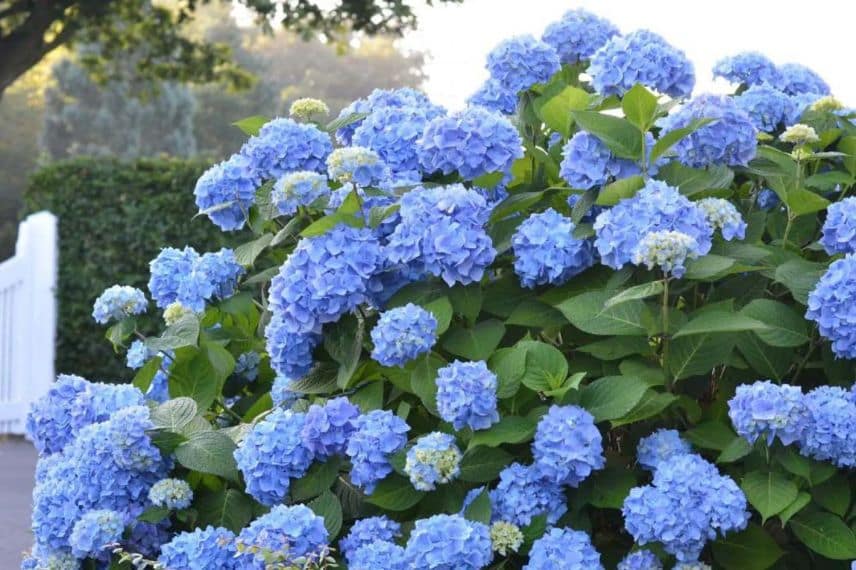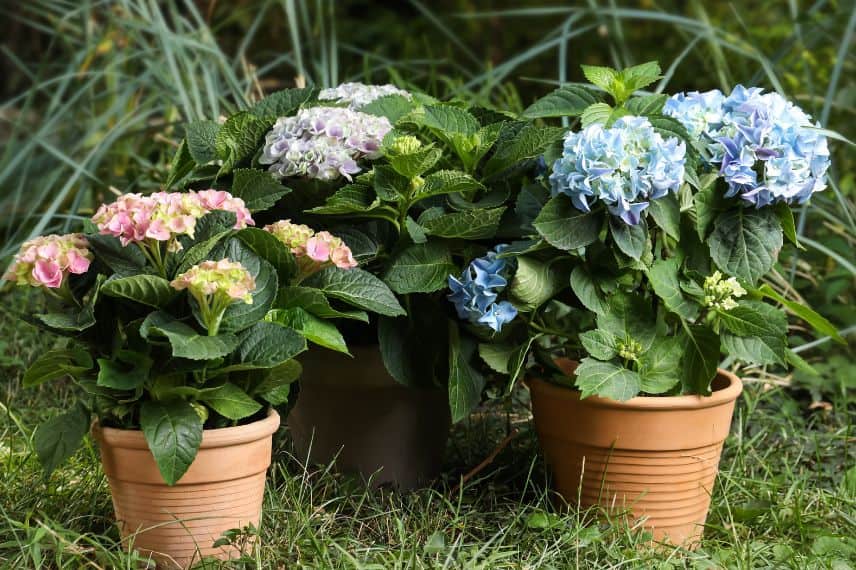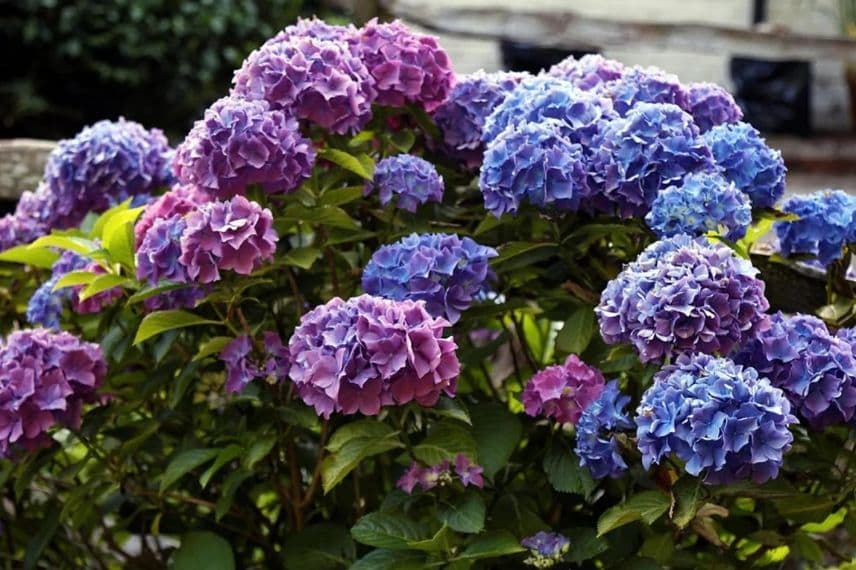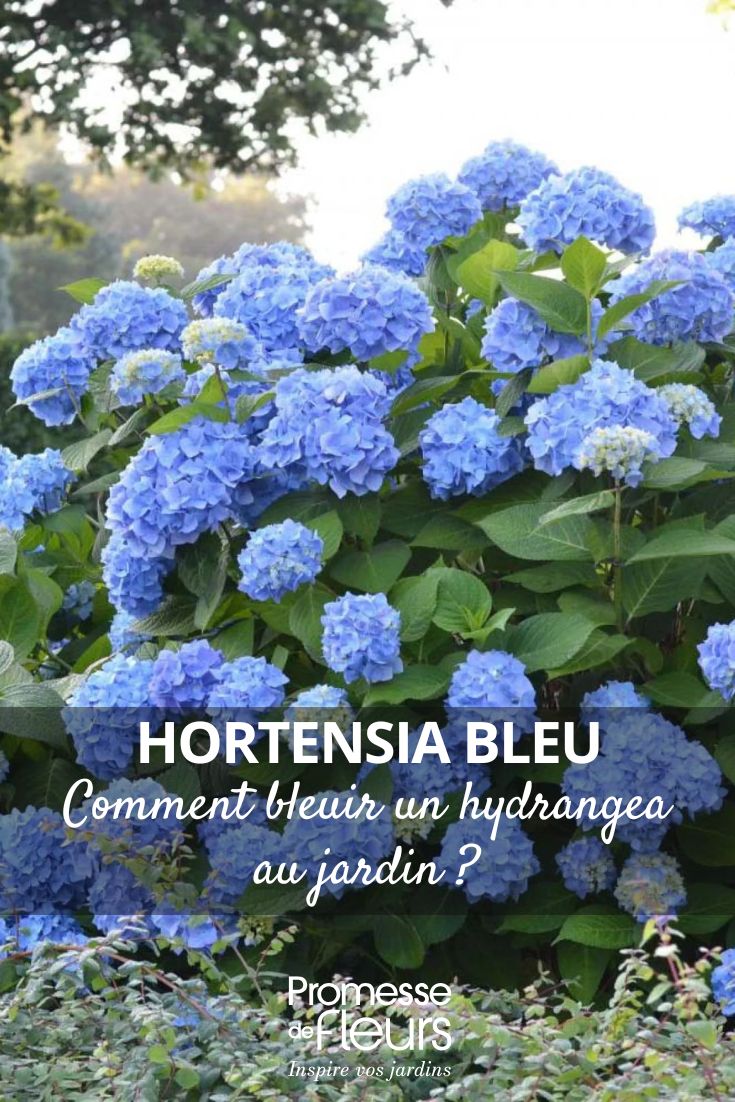
Blue Hydrangea: Our Tips for Intensely Blue Flowers
Our tips and tricks for turning a Hydrangea blue
Contents
The hydrangea (Hydrangea) is a bush prized for its abundant flowering and changing colours. While pink, red or mauve hydrangeas are common, many gardeners dream of achieving intense blue flowers. However, petal colour depends not just on the variety, but mainly on the soil and its composition. In this guide, discover our tips and tricks for getting blue-flowering hydrangeas in your garden or pots.
Why Does a Hydrangea Turn Blue? All About This Colour Change
Unlike roses or tulips whose colour is fixed, that of certain varieties of hydrangeas is directly influenced by the pH of the soil and the presence of aluminium. For a hydrangea to turn blue, three conditions must be met:
- Acidic soil (pH below 6).
- Aluminium dissolved in the earth (often naturally present if the soil acidity is sufficient).
- A hydrangea variety whose flowers can turn blue.
The colour-changing phenomenon is therefore linked to the chemistry of the terrain and the elements present in the substrate.
Note: it is possible to slightly acidify slightly acidic or neutral soil (pH between 6 and 7). For this, see chapters 3 and 4 below.
→ And if you wish to know your soil’s pH, read our article: “How to measure soil pH“.

Hydrangea macrophylla ‘Endless Summer The Original’
Read also
Blue hydrangeas: the best varietiesHydrangea varieties that can turn blue
Not all hydrangea varieties can change colour. White hydrangeas, for example, will never turn blue. Only certain Hydrangea macrophylla and a few varieties of Hydrangea serrata can produce blue flowers under the right conditions.
If you’re looking for a hydrangea that can turn blue easily, here are some recommended varieties to plant in your garden:
- Hydrangea macrophylla ‘Nikko Blue’ : A much-loved variety for its azure blue flowering and good cold resistance.
- Hydrangea macrophylla ‘Bodensee’ : Admired for the deep blue of its large, rounded panicles of flowers and its long flowering period.
- Hydrangea macrophylla ‘Mariesii Perfecta’ : This bush produces beautiful flat panicles of flowers, initially white when they bloom, later turning intense blue to mauve.
- Hydrangea serrata ‘Bluebird’ : An ideal bush for cool climates like Brittany. Its flowers range between blue and violet in acidic soil.
→ Discover our other blue-flowering hydrangea varieties.

Top: Hydrangea macrophylla ‘Nikko Blue’ and Hydrangea macrophylla ‘Bodensee’. Bottom: Hydrangea macrophylla ‘Mariesii Perfecta’ and Hydrangea serrata ‘Bluebird’
How to plant a blue hydrangea?
Position: Hydrangeas prefer a partially shaded spot, with morning sun and afternoon shade, sheltered from the wind.
Planting in the ground:
- Dig a hole 40 to 50 cm deep and wide.
- If your soil is already acidic (pH between 4 and 6), there’s no need to add heather soil. For neutral or slightly acidic soil (pH between 6 and 7), mix 50% heather soil with 50% garden soil.
- Add a handful of crushed slate to gradually release alumina and enhance the blue colour of the flowers.
- Also add a few handfuls of compost or leaf mould to enrich the soil.
Container planting:
- Place a layer of clay pebbles at the bottom of the pot.
- Mix 50% heather soil and 50% potting compost for flowering plants.
- Add a handful of well-rotted compost to improve moisture retention.
- Also add crushed slate (around 100 g) to encourage blue colouring.
- Place the pot in partial shade for intense blue flowering.

Read also
Hydrangea: 7 ideas to pair it withMaintaining a Blue Hydrangea to Preserve Its Colour
Watering and suitable fertilisation
- For watering, use only non-calcareous water: rainwater or filtered water. Avoid tap water if it is hard.
- For fertilisation, a specific fertiliser for blue hydrangeas is ideal. It should be rich in potassium and magnesium, but low in phosphorus, as the latter limits aluminium absorption.
- Avoid using fertilisers containing too much calcium.
Maintaining soil acidity long-term
To preserve a beautiful blue colour year after year:
- Mulch with pine bark to maintain slightly acidic soil.
- You can also add acidic organic matter such as pine needles, blonde peat or leaf mould.
- Add aluminium sulphate (available at garden centres) or crushed slate to the surface every year.
- Remember to test your soil’s pH each year to adjust inputs and maintain a beautiful blue hue.
How to use aluminium sulphate?
- In open ground: Dissolve 10 g of sulphate in 5 litres of water and water once a month in spring and summer.
- In pots: Dissolve 5 g of the product in 1 litre of water and water at the base of the plant every two weeks, from spring until early autumn.

Hydrangea macrophylla ‘Blauer Zwerg’
Can you get a blue hydrangea in chalky soil?
Why does limestone prevent blue colour in hydrangeas?
A limestone soil contains a high amount of alkaline rock and minerals that block the absorption of alumina by the roots. Under these conditions, the hydrangea cannot produce blue flowers, and therefore remains pink or mauve.
Even when adding aluminium sulphate, the effect will be cancelled out by the presence of limestone, making any colour change impossible. In short, if your soil is limestone-based, you can add as much as you like: you will never achieve a blue hydrangea in the long term.
What to do if you have limestone soil?
The best solution is to grow your hydrangea in a pot. This method allows you to control the type of soil and maintain ideal acidity for achieving a beautiful blue colour.
- Subscribe!
- Contents
































Comments